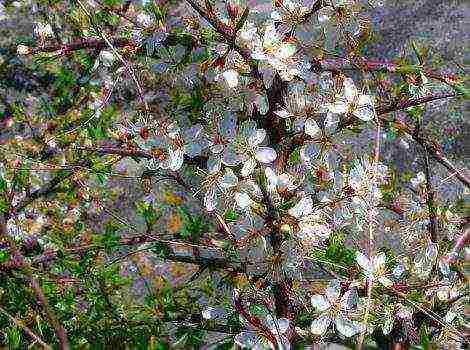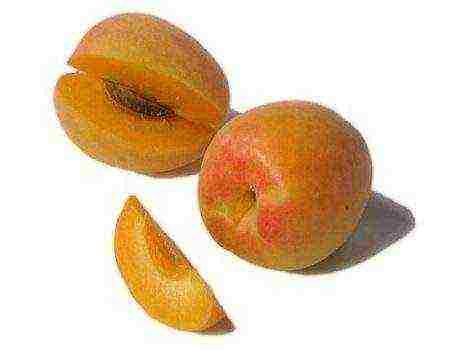Content
Plum is one of the most famous fruit crops. It came from Asia and spread throughout Europe, not forgetting Russia. This shrub is quite unpretentious and takes root easily. in summer cottages, however, you should count on a good harvest only with proper care and proper planting.
The main rule of any planting or transplanting a tree - it must have time to take root before the onset of heat or cold, otherwise the whole year will be wasted.
In other words, you need to plant and transplant plums:
- In early spring: it is necessary to plant before the start of sap flow and the appearance of buds, that is, already in April, as soon as the earth warms up. In this case, the plum will immediately begin to actively develop and feed, which will give it the opportunity to grow stronger before the next wintering. Also, the advantages of a spring transplant include the timing: if the gardener drags out a little with planting, he will not have to worry about the health of the seedling.
- In the first half of autumn, from the end of September to the 20th of October. It is important to have time to transplant 3-4 weeks before the onset of cold weather, otherwise the plant will freeze. Repotting in the fall helps to fully prepare the garden for next year.
The timing of transplanting is also influenced by the selected variety.: for example, winter-hardy varieties can be planted immediately after the snow melts.
Terrain is equally important: for the Moscow region and the Central strip, the above transfer times are valid. In Siberia and the Urals, it is worth doing an autumn transplant a little earlier, when about a month remains before frost, it is also necessary to stop at specially bred varieties.
Advantages and disadvantages of autumn planting
Transplanting plums in the fall has several advantages:
- The opportunity not to lose a year if the tree does not take root. If during the autumn transplant the plum cannot take root or suffer, in the spring the bush can be replaced with a new one without spending a whole year.
- No need to rush in the spring. In the spring, it is important to have time to plant a plum before buds begin to appear, but the earth does not always have time to warm up, and you should not forget about night frosts.
- In the fall, the transplant can be combined with other agricultural works without wasting time.
- The plum will receive a double "portion" of fertilizers - in the fall during transplantation and in the spring.
- Having transplanted a plum in the fall, in the spring the bush will begin to develop immediately, which will allow it to grow faster.

The disadvantages of autumn work include lack of the ability to trace the plant. If in the spring the gardener regularly appears in the country and immediately pays attention to the problem, then in winter the tree will have to wait until the thaw itself.
Also, in some regions, winters are unpredictable (they may be too hot or, on the contrary, warm), which also affects the characteristics of transplanting and growing.
When choosing the time for a transplant, it is important to focus on your own convenience and climate... For example, if the winter is not constant, and the seedlings often die due to temperature changes, it is worth planting them in the spring.
Basic landing rules
Before starting a transplant, it is worth remembering a few important rules:
- only young trees, no more than 2-3 years old, can be transplanted.At an older age, the plant already develops a huge root system, due to which transplantation will be difficult;
- when digging, it is important not to damage the roots, otherwise the bush will need an additional year to restore the system. It is best to transplant without cleaning the roots;
- when transporting a plant from one place to another, it is important to handle the roots carefully;
- when planting plums in the spring, it is necessary to prepare the pits in the fall, with autumn work - 2-3 weeks before their start.
Step-by-step guide to outdoor planting, growing and care
A successful transplant depends on several factors, we have prepared for you a step-by-step guide for planting and caring for your garden plum sapling.
Seedling preparation: it takes place in three stages. First, you need to water the bush abundantly so that it is easier to dig it up. To do this, pour 4-5 buckets of plain water onto the plum roots.
Then you need to dig in a tree in a circle at a distance of 70 cm from the trunk, dig out a cone-shaped piece with roots and carefully pull out the plant, being careful not to damage the roots.
If the tree needs to be transported, its roots should be wrapped in a bag or film, securing it with a rope.
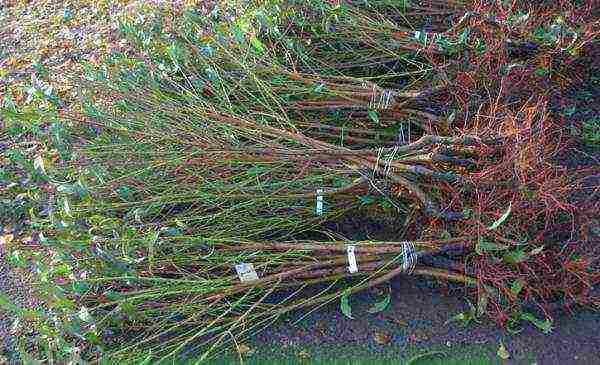
Seat selection: plum loves a sunny warm place with protection from the wind, without excess water and without stagnant melt water. The plant takes root best of all on moderately moist and fertile soils; clay soil does not suit it.
Other large crops should not grow near the shrub, otherwise they will pull all the nutrients from the plum and create shade.
Articles that may be of interest to you:
- The benefits and harms of plums for human health.
- The best varieties of plums to grow on your site.
- Plum care in the fall in the country.
Landing in open ground: The first step is to prepare the soil in advance. With an autumn transplant, this is done in 2-3 weeks, that is, at the beginning of autumn.
It is necessary to dig holes 70cm * 70cm * 70cm at a distance from each other. Then pour a layer of drainage (broken brick or stone) - this will help remove stagnant moisture.
After that, you need to pour a layer of compost and cover it with a thin layer of earth - this will save the roots from the excessively strong effect of fertilizers. The remaining earth is mixed in equal proportions with humus, 300 grams of wood ash is added and poured into the pit.
When planting in the ground, they dig a hole and carefully transfer the bush there, straightening the roots. Then the seedling is watered abundantly, and the ground is mulched.
When planting, it is necessary to ensure that the root collar is 3-5 cm above ground level.
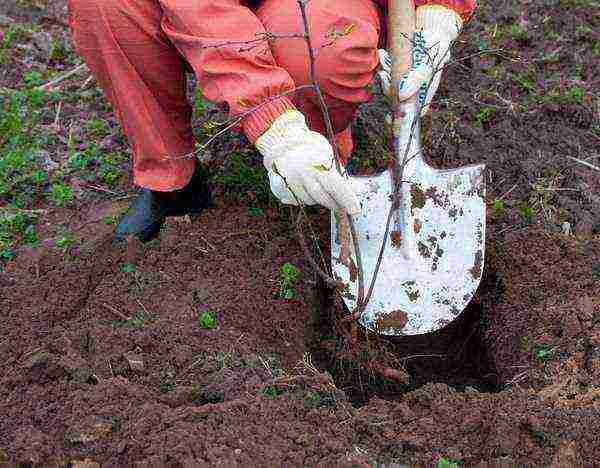
Follow-up care: for the first 2-3 years, the main care of the plum will be its growth and crown formation.
To do this, you need to regularly look after, remove the lower branches, shorten unnecessarily long and thicken the crown. It is important to do this while the branches are young, then the pruning will be painless.
Plums require regular watering (about 5 buckets of water under each tree), loosening the soil and removing weeds. With a plentiful harvest, it is necessary to provide the branches with supports so that they do not break.
In the spring as complementary foods, you can use a solution of poultry manure or cowshed, nitrogenous fertilizers are also suitable. In autumn it is worth adding superphosphate or potassium sulfate - 100 grams for each plum.
Proper preparation for winter
Winter preparations should begin a few weeks before the onset of cold weather... For each plum, fertilizers must be applied: per square meter of land, you will need a bucket of humus, 200-300 grams of ash and 30 grams of superphosphate or potassium sulfate.
Fertilizers must be slightly dug in, loosening the ground, and watered abundantly.
Then you need inspect the crown and trunk, removing all pests... The spoiled leaves and branches are cut and burned away from the trees, the spoiled bark is scraped off with a scraper and a wire brush.
In the process, you need to be careful not to touch healthy areas.
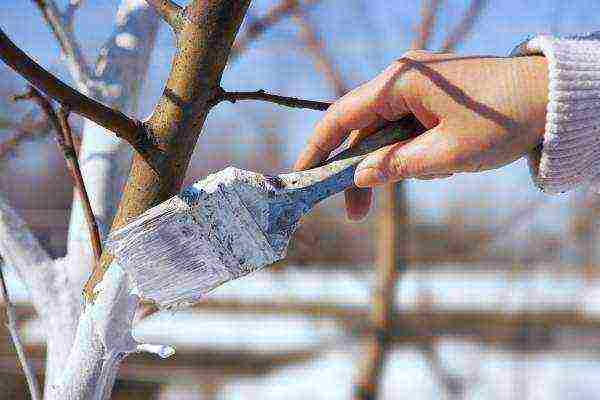
After falling leaves to protect against insects the trunk is whitewashed with a special solution from a store or a mixture of equal parts of lime, clay and cowshed. You can also add copper sulfate - 30 grams per liter of whitewash.
Just before the frost the trunk is insulated with burlap or straw... If winter promises to be cold, you can use slate or roofing felt. If the bushes are still small, you can cover them on top with a bag or spruce branches, make a "hut" of boards.
Any "shelter" must be carefully secured so that the wind does not blow it away. The soil under the tree is spud and spread with manure.
Is it possible and how to transplant plums in the fall?
Wherein plum is extremely sensitive to any wounds and because of this, it will take longer to take root in a new place.
During transportation, you need to watch out for branches and roots.: the former can be carefully tied with a rope, the latter can be wrapped in a bag. Otherwise, the transplant takes place according to the method described above.
At first glance, a plum may seem rather capricious and difficult to care for, but this is not true. Young seedlings mainly require careful and careful care.that are just starting to grow.
In a few years already the formed tree will require a minimum of effort - watering, feeding and warming for the winter.

